Lacto Fermented Radishes
Well with a blog name like Lacto Fermented Radishes I’m sure to be screaming up Google’s rankings, before I know it I might crack page 100!!! Lacto Fermentation is a scary name for one of mankind’s oldest forms of preserving foods. Broken down into its basic component it is preserving food with salt and the help of some friendly micro-organisms. The salty brine that the vegetables (radishes in this case) soak in prevents the build up of harmful bacteria while the good bacteria ( yes, there are some good ones out there so lay off on the Purell for a bit) work their magic. The good bacteria also help by producing an acidic environment that helps squelch the bad bacteria’s desire to spoil our food.
What Do I Need?
- Sliced radishes
- Kosher Salt (any non-iodized salt will do)
- Some Peppercorns
- Peeled clove of garlic
How Do I Do It?
Drop a few peppercorns and the peeled clove of garlic into a clean pint mason jar. Mix the brine solution in another clean container. I was making just one pint this evening so I mixed 1 Tbs of salt with 16 oz of bottled water. Fill the jar with the radishes and add the brine, leaving about 1/4 inch of headspace.
Cover them tightly and find a nice dark and cool place to keep them for a few days. This is my first attempt at preserving food with lacto-fermentation so stay tuned as I will be trying them this weekend.
*** Update 5/30 ***
Well I cracked open the jar of radishes on Saturday night. I had two victims, err I mean volunteers, try them. 2 out of 3 testers liked them. The radishes have a nice garlicky saltness to them with just a bit of a sour , reminiscent of a good half-sour dill pickle. I do think my wife was slightly turned off by trying something I had fermented in our pantry but she was game so props to her. I would make these again and look forward to trying some other veggies when they come out of the garden.
Inspired by The Urban Homestead (Expanded & Revised Edition): Your Guide to Self-Sufficient Living in the Heart of the City (Process Self-reliance Series)
and Wild Fermentation: The Flavor, Nutrition, and Craft of Live-Culture Foods
Affiliate Disclosure: I am grateful to be of service and bring you content free of charge. In order to do this, please note that when you click links and purchase items, in most (not all) cases I will receive a referral commission. Your support in purchasing through these links enables me to keep the content train rolling

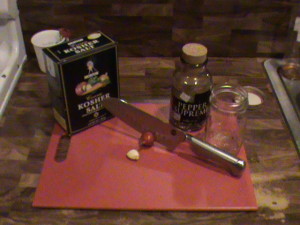
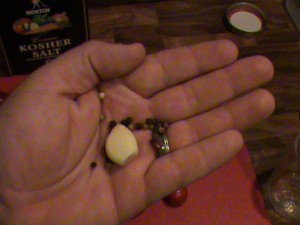

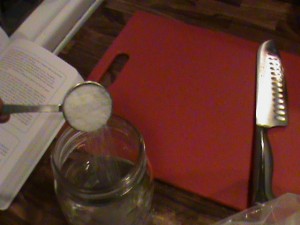
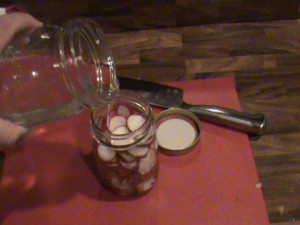
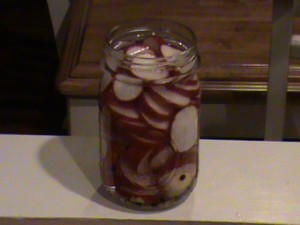

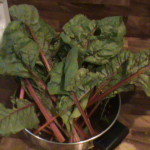



This is good stuff, please blog about pickling cucumbers when the cucumber crop comes in. I believe I will have more cucumbers than I will know what to do with.
This is already in the works. I’m going to try a comparison between the three pickling methods (fermented, refrigerator, and hot pack) and see which I like best.
This method sounds so easy. Looking forward to reading about outcome.
What other kinds of foods can you preserve with this method?
This method works well with sturdy, firm veggies. Radishes, cabbage, green beans, carrots, and of course cucumbers. A variation of this method is used to make sauerkraut (watch for this in the fall) and traditional Dill Pickles. The sauerkraut is going to require a daily scum scooping while it ferments so I started with an easy one instead. You’ve got to crawl before you can walk. . .
Great info. Gotta admit that your mistake is what caught my attention, somtimes I feel like I’m the only one that can’t get recipe’s right. You mentioned a compost, any plans on blogging on what goes into your compost? And it’s overall use?
Thanks for the kind words. One of my goals in setting up this blog is that everything can’t be as easy as the books and magazines make it look. Hopefully I can inspire a few people to try some of the projects I’ll be doing. I’ll be setting up a composting bin in the very near future.
Psst — wanna post this to Punk Domestics? Pretty please?
man i had awesome radishes in the garden this year. Some were up to 6 inches long and looked like carrots. If only i had known what to do with them. Sad to say I let some of them spoil
hi there… I’m a big fan of lacto-fermenting for food preservation, and the first wave of radishes are readying themselves in the garden, so I’m really happy to have found this recipe- and your remarks on the results!
I see in one of the photos that you have a book (I imagine the recipe is coming from it?) Care to share the title of the book and what it’s all about? Good printed resources for food preservation are so valuable!
Thanks again! I’m going to try these tomorrow!
Gabby,
It was from one of these two books:
The Urban Homestead (Expanded & Revised Edition): Your Guide to Self-Sufficient Living in the Heart of the City (Process Self-reliance Series)
Wild Fermentation: The Flavor, Nutrition, and Craft of Live-Culture Foods
This was an older post and my camera kind of stunk so I can’t ID it. I can highly recommend either of them.
Let me know how they come out,
Mike
Clearly your title worked, almost 2 years after you wrote this post, I’m looking for how to ferment my radishes in a Fido jar, and you’re the first search result!